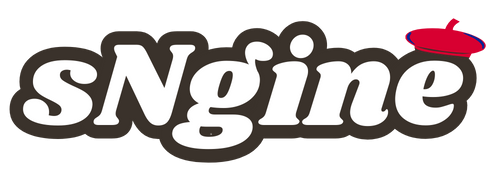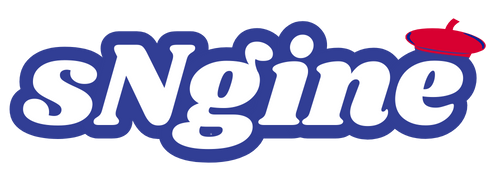The liquid powder speciality coating equipment market size has expanded significantly due to rising demand from industrial coating sectors. The market encompasses various equipment types, including automated coating lines, powder spraying systems, and surface finishing equipment. As industries prioritize efficiency and product longevity, the demand for reliable and precise coating equipment continues to grow, reflecting an upward trend in market size across regions such as North America, Europe, and Asia-Pacific.
The liquid powder speciality coating equipment market has been witnessing significant growth over recent years, driven by the rising demand for high-quality surface finishing solutions across various industrial sectors. These coating systems are designed to apply liquid and powder coatings on different substrates, ensuring durability, aesthetic appeal, and enhanced protection against environmental factors. With industries such as automotive, construction, electronics, and aerospace increasingly focusing on product longevity and visual appeal, the role of speciality coating equipment has become indispensable. Unlike conventional coating methods, liquid and powder coating equipment offers precise application, uniform thickness, and minimal material wastage, making it a preferred choice for manufacturers looking to optimize efficiency while maintaining high standards.
Market Size and Growth Prospects
The liquid powder speciality coating equipment market size has been expanding steadily due to the continuous adoption of advanced technologies in coating processes. Industry reports indicate that increasing automation, integration of robotics, and the rise in demand for eco-friendly coating solutions are major factors propelling market growth. The market has also benefited from the shift in manufacturing practices towards lean and sustainable operations, as these coating systems minimize energy consumption and reduce emissions. Additionally, small and medium-sized enterprises (SMEs) are gradually adopting these systems to enhance their production capabilities, further broadening the market base. The combination of industrial modernization and government incentives for sustainable manufacturing has created a favorable environment for market expansion.
Key Drivers Influencing Market Demand
Several factors are driving the growth of the liquid powder speciality coating equipment market. First, the surge in demand for high-performance coatings in the automotive and aerospace sectors is crucial. Manufacturers are investing in equipment that ensures superior corrosion resistance, chemical stability, and long-lasting aesthetics. Second, the electronics industry’s requirement for precise and thin coatings on delicate components has led to innovations in liquid and powder coating technologies. Third, stringent regulatory standards regarding environmental safety are encouraging companies to adopt powder coatings, which are free from volatile organic compounds (VOCs), thereby reducing environmental impact. Moreover, technological advancements such as electrostatic coating systems, automated spray booths, and programmable curing ovens have enhanced operational efficiency and quality, making these solutions increasingly popular among manufacturers.
Market Segmentation
The liquid powder speciality coating equipment market can be segmented based on type, application, and end-user industry. By type, the market includes spray coating systems, electrostatic coating machines, powder coating booths, and hybrid equipment capable of handling both liquid and powder coatings. Each system offers specific advantages depending on production needs, material types, and desired finishes. In terms of application, these systems are used for protective coatings, decorative finishes, anti-corrosion treatments, and functional coatings, which enhance mechanical and chemical properties. End-user industries include automotive, aerospace, construction, electronics, furniture, and industrial machinery, all of which rely on coating equipment to achieve durability, performance, and aesthetic appeal. The segmentation demonstrates the versatility and broad applicability of these systems across multiple industrial domains.
Regional Insights
The liquid powder speciality coating equipment market shows distinct trends across regions. North America and Europe are prominent markets due to high industrialization, adoption of advanced manufacturing technologies, and the presence of established automotive and aerospace sectors. Companies in these regions prioritize efficiency, product quality, and sustainability, leading to significant investments in advanced coating equipment. The Asia-Pacific region is emerging as a high-growth market, driven by rapid industrial expansion, increasing disposable income, and growing demand from automotive, electronics, and construction industries. China, India, and Japan are witnessing heightened adoption of liquid and powder coating systems due to large-scale manufacturing activities and infrastructure development projects. Meanwhile, regions such as Latin America and the Middle East are gradually adopting these systems, fueled by investments in industrial modernization and technology upgrades.
Challenges in the Market
Despite the promising growth, the liquid powder speciality coating equipment market faces certain challenges. High initial investment costs can be a barrier for small-scale manufacturers seeking to adopt automated coating systems. Additionally, the requirement for skilled labor to operate and maintain sophisticated equipment poses another challenge, particularly in emerging markets. Maintenance and calibration of electrostatic and hybrid coating systems require expertise, and any operational errors can lead to significant production losses. Furthermore, fluctuations in raw material prices for coating powders and liquids can impact overall costs, affecting adoption rates. Manufacturers are continuously working on designing cost-effective, user-friendly, and energy-efficient systems to overcome these barriers and make coating equipment more accessible to a broader range of industries.


